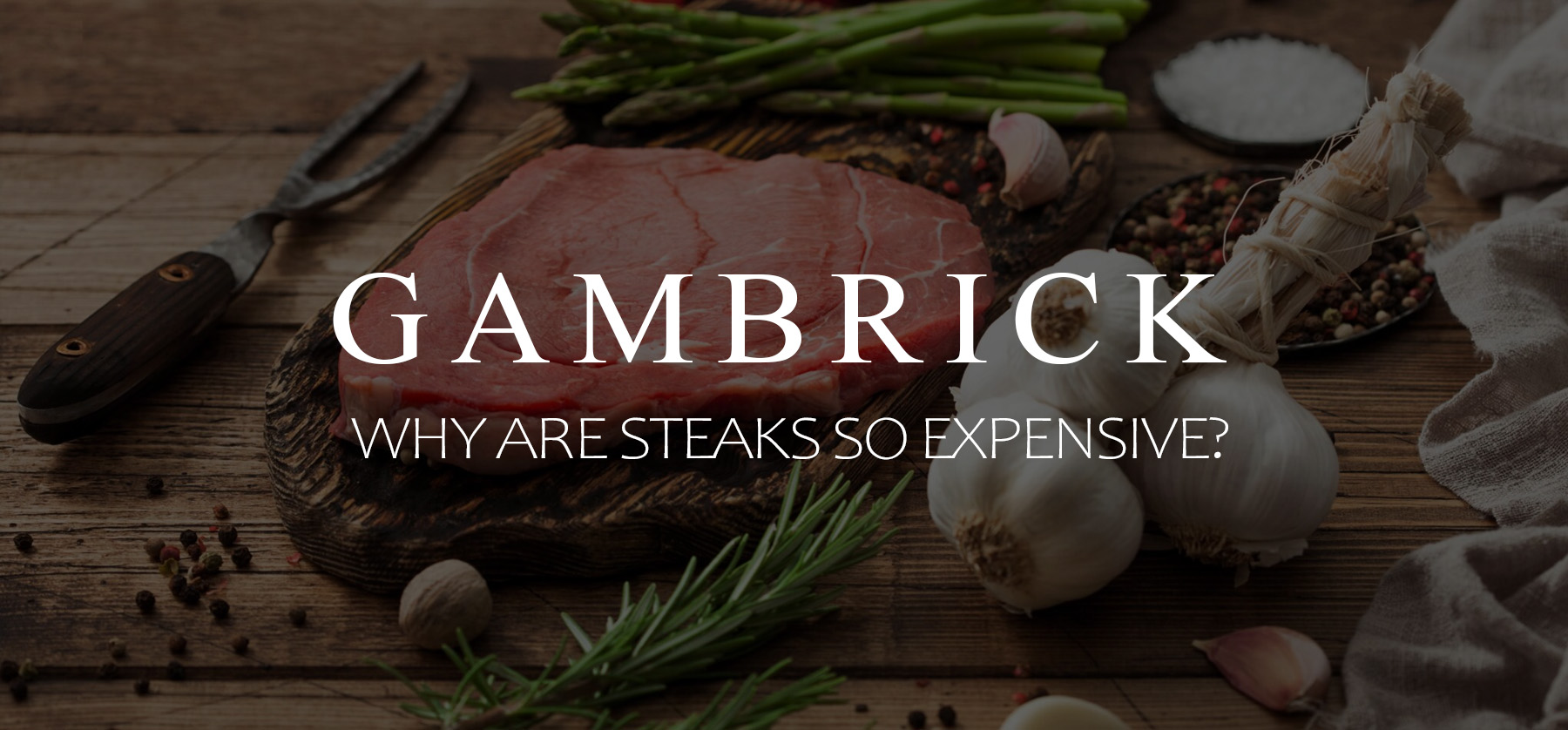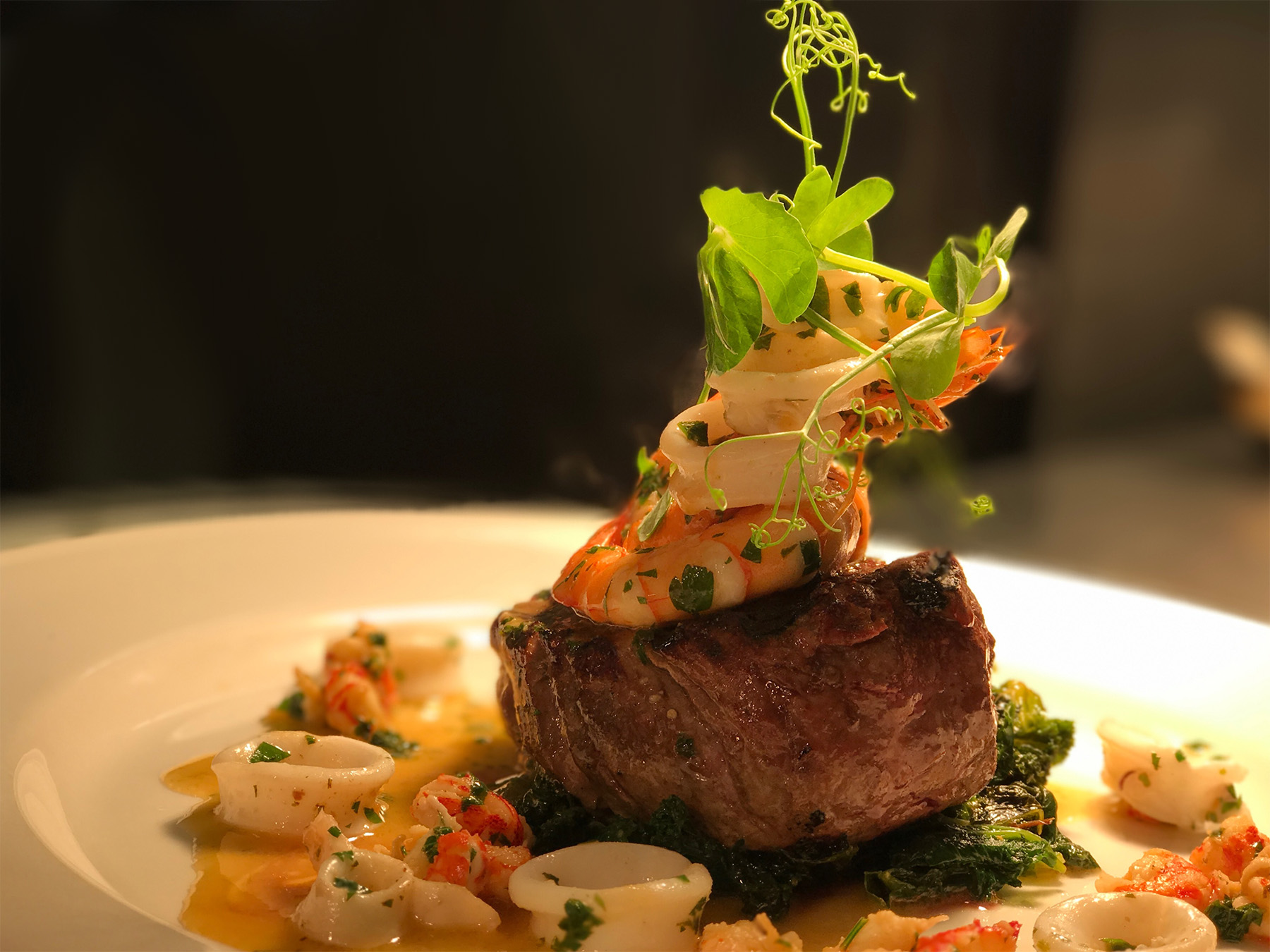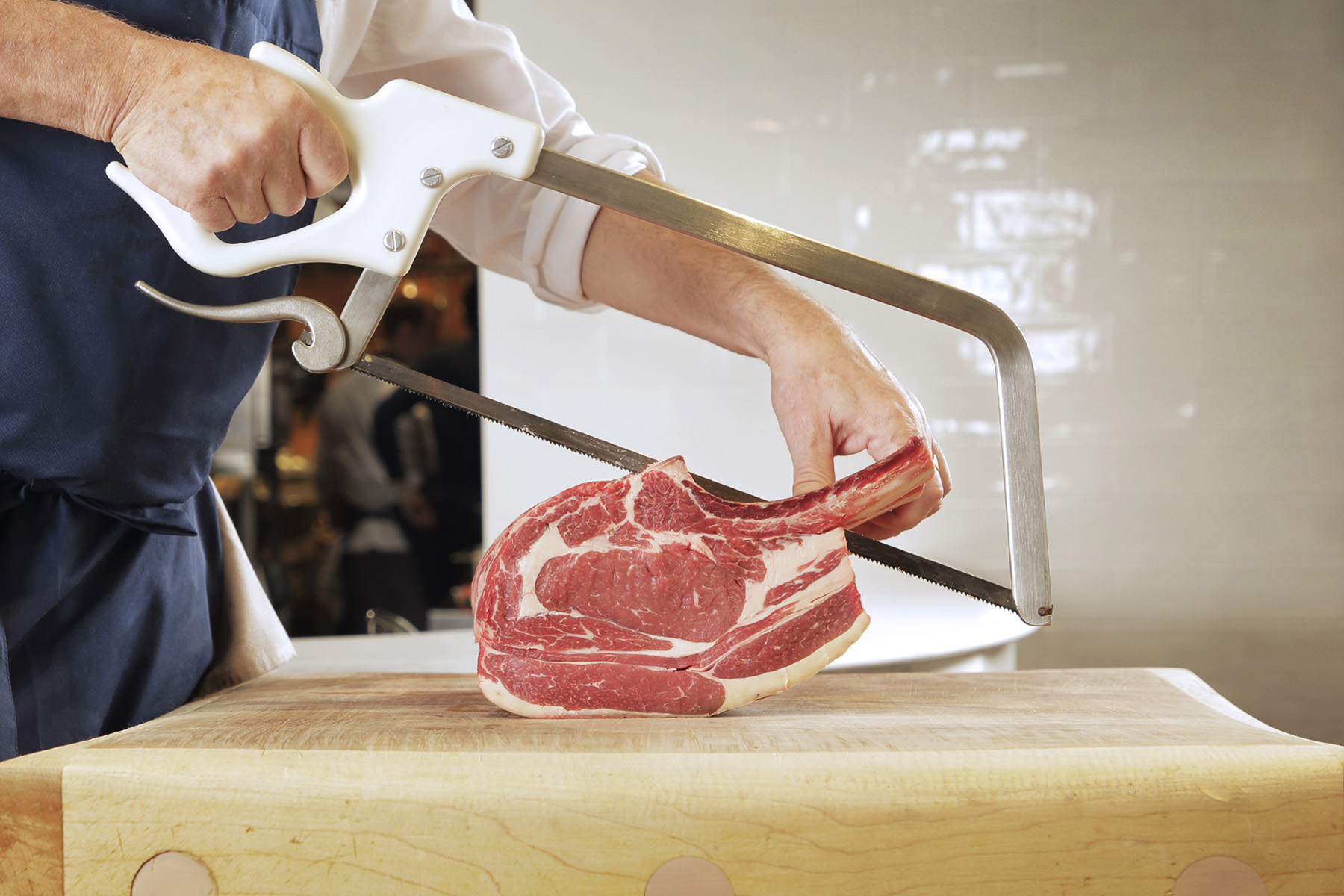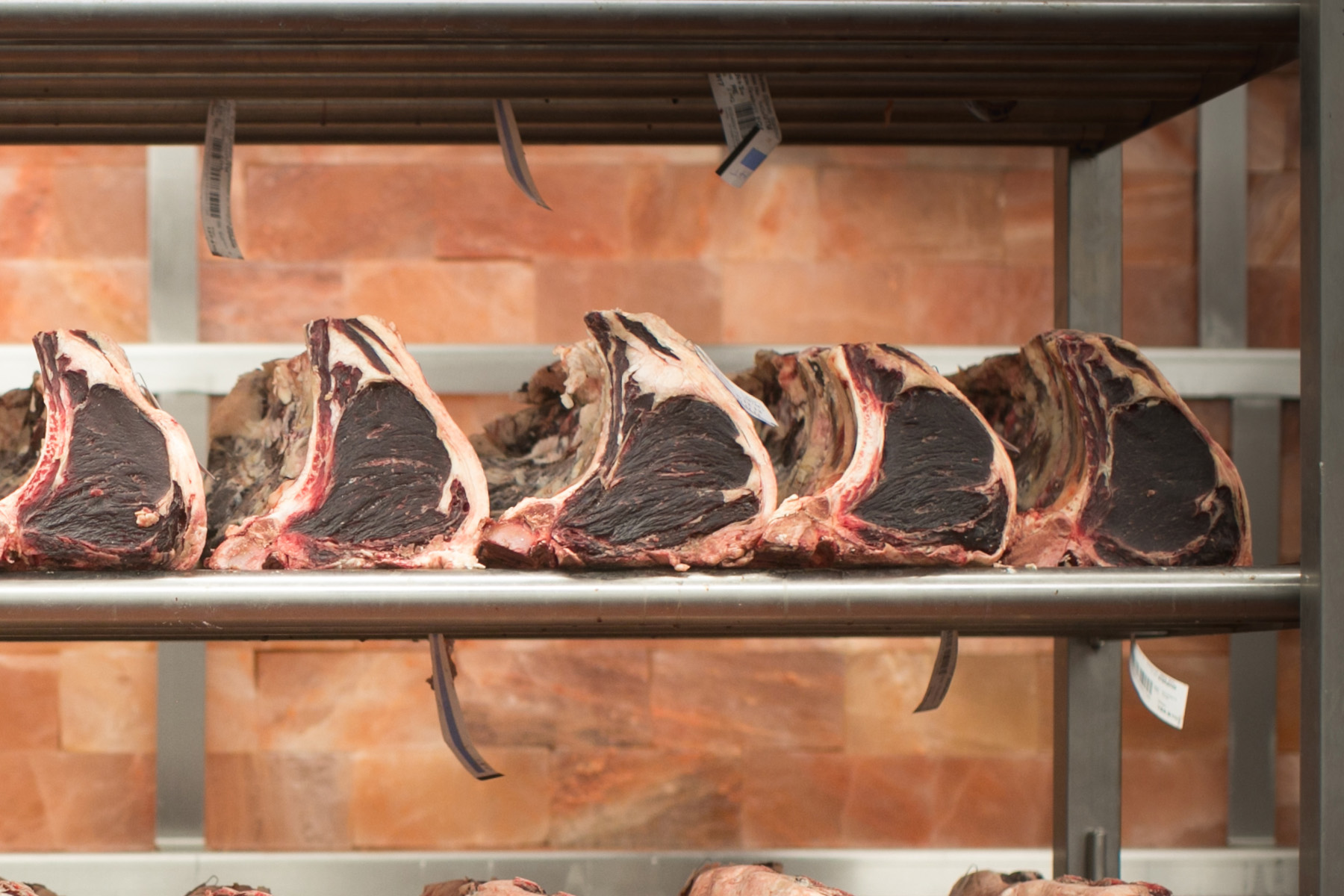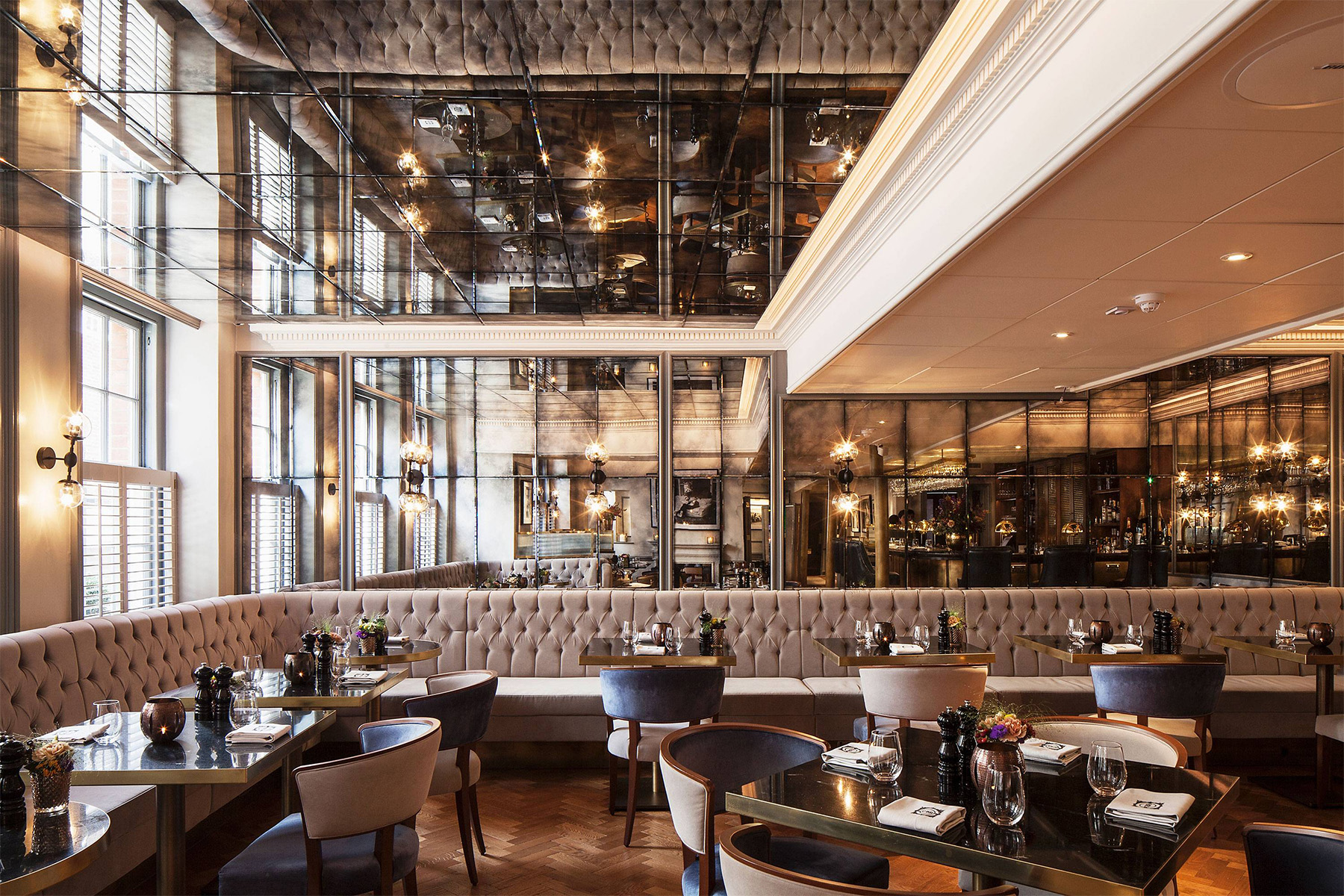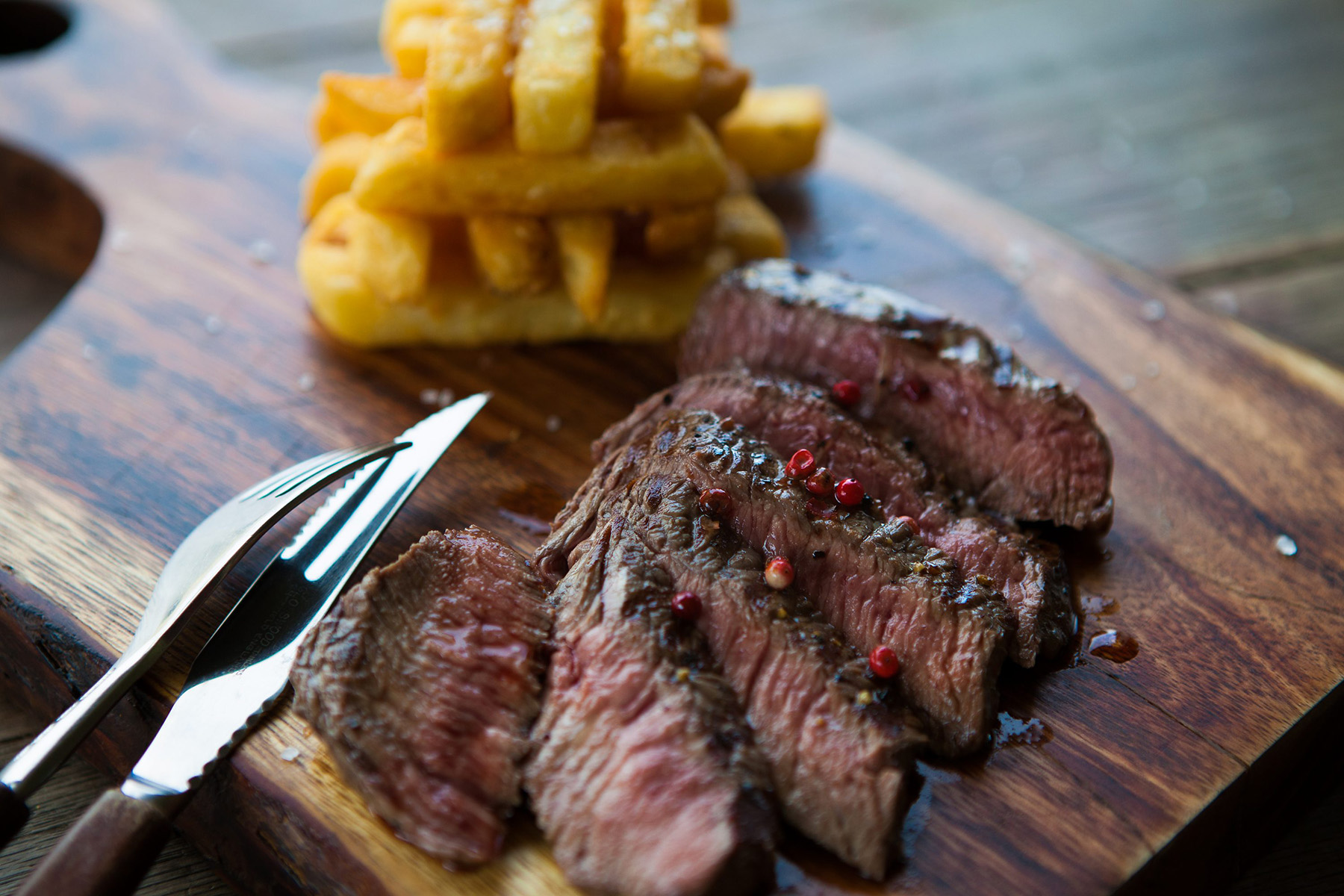Why Are Steaks So Expensive?
Inflation is raging and prices seem to be going up for just about everything. Home goods, clothes, gas, cars, travel and food. One of the biggest price increases we’re feeling has been in beef. There are quite a few reasons why steaks are so expensive. Since the lock-downs, beef has risen over 40%. This is partly due to increased costs at meat production plants. The cost of feed has risen along with fuel, labor and supplies. All of these price increases ultimately gets passed on to the consumer. Transportation costs are up because of the increased cost of diesel and labor which means meat wholesalers, distributors and butchers pay more. And then there are increased costs to run a retail business like Walmart, food stores and restaurants. No one factor is causing steak prices to be so high, it’s a combination of things all effected by inflation.
The cost of a steak has a lot to do with the wholesale price of a slab of beef. Since the cost to raise cattle is up due to feed, fuel, labor and overall expenses rising, so is the price per slab. Meat wholesalers, distributors and butchers are paying more. And they have their own higher costs to pass onto consumers because of inflation.
The same increase happens again at retail. Everyone along the beef supply line is paying more and it all gets passed on to the consumer.
Steak bought at a restaurant are so expensive vs steaks you cook at home because of the atmosphere and quality of the food, drinks and service. Your not only paying for the steaks but everything else as well.
In the article ahead we’ll be discussing steaks and why they cost so much.
Why Beef Is So Expensive
All meat prices are up, but beef prices have risen faster and higher than the others since 2020.
Some of the main factors that caused beef to rise in price so quickly stem from shut downs, cost of labor increase and fuel.
The initial shut downs left farmers with nowhere to sell their beef, which resulted in culling cattle. That, along with price increases and uncertainty in the market causes farmers to scale back. At the same time, processing facilities are dealing with labor shortages which reduced their capacity to process meat and transportation costs are way up.
Reduced production and higher fees came as demand for beef returned to the market which drove prices up.
All this happened at a time when inflation raised the costs of just about everything. Which includes feed, vehicles, equipment, labor, fuel, etc. All these price increases coming in such a short amount of time has driven the cost of beef to an all time high.
Here’s how the increase in beef prices compares to the price increase of other meats over the past few years.
- Beef and veal: 35%
- Pork: 25%
- Chicken: 22%
- Fresh fish and seafood: 20%
- Eggs: 18%
Steaks Are Expensive Due To Supply And Demand
Some cuts of steak are way more expensive than others. However, all beef is expensive these days and costs a lot more than it did just a year or two ago.
Raising cattle isn’t cheap and takes a significant investment in livestock, land, labor, equipment, feed, fuel, etc. Those prices ultimately get passed on to the meat processors which have their own cost increases to pass on. Everyone’s inflation gets passed to the next person in the chain which ultimately leads to the consumer at a grocery store, butcher or restaurant.
Better cuts of steak cost more than cheaper cuts because of quality and scarcity. The choice cuts of beef are rare on a cow.
The best cuts of beef like porterhouse, filet and tenderloin only make up about 10% of the cows meat. Since they’re the best quality cuts and scarcest, they cost the most.
90% of a cow is made up of less than choice cuts of beef.
When the amount of choice cuts is limited, supply and demand raises the price.
If choice steaks are in limited supply, such as right after the lock-downs, prices go up. This is another example of supply and demand. When there are multiple buyers for every steak, retailers and restaurants raise prices.
Raising Cattle Is Expensive
The cost of a steak starts with raising the cow. Cows must be cared for and fed for about 18 month before they can be slaughtered for beef. Grain, land, supplies, equipment, medical treatment and labor all cost money. And those costs are increasing with inflation just like everything else.
A cow is considered full grown when it’s over 1,000 pounds. This usually takes about 18 months unless it’s grass fed.
A grass-fed cow takes around 3 years to weigh over 1,000 pounds. This is because grass-fed cows eat less calories per day compared to grain fed cattle.
About half of a regular cow’s diet is grass or hay and half grain. The grain is calorie dense which makes the cow gain weight faster.
Regardless of a cows diet, they eat a lot. Cattle farmers have to keep the animals well fed and properly cared for. This means avoiding disease, sickness and predators.
The increasing cost of fuel, food and especially labor makes each cow more expensive. And this cost is then passed on to the meat processors, wholesalers, distributors, butchers, supermarkets, restaurants and ultimately the consumer.
All along the beef supply chain, everyone passes the cost of their inflation on to the consumer.
Tender Cuts Of Steak Cost More
The best cuts of steak are the most tender. And they cost the most.
There are two reasons why tender cuts are more expensive. The first is quality. Better products always tend to cost more. And the second is scarcity. Choice cuts of beef only make up about 10% of the cow which means they cost more.
Tender cuts of meat come from a part of the cow that doesn’t get much exercise. They’re high up on the cow and away from the legs. Steak is muscle. The more exercise a muscle gets, the tougher it becomes.
Most people prefer tender cuts of beef when they’re eating a steak. But if you’re buying beef for a stew or steak fajitas, tougher cuts of meat are fine.
Chewing tougher cuts of meat is more difficult if you don’t tenderize the meat. This can be done while cooking it in a stew, marinade or slow cooker. But these aren’t the ways most people cook a good quality steak.
Most steaks are seared, cooked in an over or on a grill. When you cook like this the meat needs to be tender because the cooking process doesn’t tenderize it.
Butchers Add To The Cost Of Steak
Steaks don’t come the way you see them at the store or in a restaurant. They start off as an entire slab of hanging beef. Skilled butchers cut the meat into steaks that they can sell individually. This type of work is a skilled trade that’s not cheap.
An experienced butcher knows every type of steak and how to cut them from the slab. They cut off the bone, fat, sinew and other bits you wouldn’t want to eat. Those perfect filets are the handy work of a skilled tradesmen.
Some of the best cuts of beef are in harder to reach places and require skill to cut and clean. When you buy a filet, you expect high quality tender beef without much fat or gristle. This is due to the butches work.
Because of a butchers skilled work, cuts of beef not only taste great but also look good too. Certain cuts need a traditional shape like a T-Bone or Porterhouse. That trademark shape is partially due to the anatomy of the cow but also because of the butcher’s work.
Whether you buy your beef online, in a supermarket, Walmart or Costco, a butcher has to be paid somewhere along the supply line to cut the steaks. And this is one of the reasons why steaks are so expensive.
Prime Grade Steaks Cost More
The USDA gives each cut of beef a grade. Prime grade cuts costs more than lower grades.
Grades include prime, choice, and select.
Prime is the highest quality meat and the best grade. Therefore prime beef is also the most expensive. Prime cuts tend to be the youngest with great tenderness and marbling. And as steak lovers know, marbling is a good sign the beef will be flavorful and juicy.
Most great steakhouses and restaurant serve prime cuts of beef.
A Choice grade is usually given to cuts like ribs and loins. They’re usually flavorful and tender but less so than Prime cuts. Most restaurants also serve Choice cuts of steak.
Select grade steak is usually leaner and tougher with less flavor. These cuts are usually cooked with a marinade or in a stew and not as a steak. The cooking process and spices help tenderize and flavor the meat.
Restaurants serve Select grade steaks in many of their dishes like stews, tacos and fajitas.
There are some lesser beef ratings you should also be aware of. They’re generally cheaper and of lesser quality. But you can still make a nice stew or beef dish out of them.
These ratings are standard, commercial, utility, cutter, and canner.
Most standard, commercial, and utility cuts are sold as store brand beef without a grade of the label. You can find some really nice cuts of steak that are store brand and they’re cheaper.
Utility, cutter, and canner are grades of beef that aren’t normally available for retail sale. But you can find the meat in some hamburger meat and other beef products.
A beef grading system is another reason why steaks can be so expensive.
Dry Aged Steaks Are Expensive
When beef is dry aged it increases its flavor and tenderness. In some cases, steak can be aged for months. This totally changes the flavor of the meat and its texture. However, it also makes the steaks very expensive. In many steakhouses, a single dry aged steak can easily cost over $200.
Cuts of beef are placed in a temperature and humidity controlled room and left alone. There, they slowly age for a few weeks to a few months. About three to four weeks is the average.
The dry aging process dries out the meat which allows enzymes and bacteria to grow. But there’s no danger because there areas are cut off before the steak is cooked.
Because of how long it takes to age beef, and the added expense of the controlled room the steaks are more expensive.
First, the meat is stored and allowed to age. This takes time and money.
While the steak sits and ages, it dries and shrinks. This reduces the size of the steak but actually increases its cost. Before the meat is cooked, the crust that formed is cut off and disposed of. This further reduces the weight of the steak.
Once the dry aging process has finished, you have less meat but it’s more tender and flavorful. This entire process takes time and money which is then passed onto the diner.
Wagyu Beef Is Expensive
Some cuts of beef are more expensive than others. But the type of cow can effect the price of the steak too.
Wagyu beef is one of the most expensive in the world. The word Wagyu translates to Japanese cow which is where Wagyu beef comes from.
The meat has a buttery taste with rich marbling. It’s flavorful and very tender. But also very expensive. Real Wagyu beef can cost as much as $200 per pound.
The cows are bred a special way so that their muscles develop marbled fat. When beef has more marbling, it becomes more tender with a pink coloring. Many people consider Wagyu to be a fine delicacy and not just a piece of steak.
The production of Wagyu beef is tightly regulated in Japan to ensure it’s of the best quality and the highest standards. This process also adds to the meats cost.
Wagyu beef is graded based on two criteria.
The first is how much meat comes from the cow and the second is the quality of marbled fat. Just like USDA beef grading, the higher the grade the more it will cost.
In Japan, only beef with grades A3 to A5 is certified for sale.
As with American beef, supply and demand and quality effect the steak’s price. Wagyu is rare and of very high quality which makes it an expensive steak.
The high cost of transporting Wagyu to the United States adds even more to the price because real Wagyu beef is raised in Japan.
New Cuts Of Beef Are More Expensive
There are traditional cuts of beef that most people know like Filet, T-Bone, Porterhouse, Flank, etc. But did you know the beef industry is creating new cuts that are more tender and flavorful?
Butchers can cut a slab of beef in specific way to try and get new cuts that are more tender. They can then be sold in pieces to make a stew or as steaks. While these new cuts are not as tender as a Filet, they’re still an improvement over the way butchers used to cut the slab.
A few of the newer cuts of beef include flat iron steak, ranch steak, and Denver steak.
The best cuts of beef only make up about 10% of a cows meat. And there’s nothing farmers can do to increase this amount. However, butchers are being creative about how they cut the rest of the slab.
In most cases these newer cuts of beef are more expensive than a generic store brand steak. This is because they’re more tender, flavorful and take the butcher longer to prepare.
Why Are Steaks More Expensive At A Restaurant?
When you order steak at a restaurant, you’re not only paying for the food but also the service, quality and experience.
There’s labor involved when you cook a great steak. Not only by the chef but also waiters, dishwashers, managers, bar tenders, suppliers, vendors and the hostess. Running a restaurant is a hard business with tight margins. Especially when you go to cities like New York, Los Angeles and Miami.
Most people go out to eat instead of cooking at home because they want not only the meal but a good time. Eating at a nice restaurant can be a lot of fun. But it comes at a price. All those expenses the restaurant must pay for are passed on to it’s customers.
A big reason why steaks are more expensive at a restaurant than at home is the quality. Not only of the beef but also the food. Top steak houses have trained chefs that really know how to cook a great steak. A restaurants kitchen has a commercial stove that can reach over 700 degrees to sear the beef. Commercial kitchens can cook steak in ways that most people can’t replicate at home.
A restaurant may also offer meat you can’t buy at a store or butcher such as dry aged steak. In an experience you have to get from a steak house that ages the beef on site.
Is it worth paying all that extra money for a restaurant steak vs cooking at home? On occasion I think it is. But I still love grilling my steaks at home just how I like them.
How Can I Save Money Buying A Steak?
The best way to save money if you want a great steak is to cook it at home. When you cook a steak yourself, all you pay for is the beef. At a restaurant you pay for the chef, service, drinks, and the entire experience. A steak dinner can easily top $100 + tip for just $30 worth of meat.
Buying beef from a butcher can be less expensive than at a supermarket. Especially if you do a lot of business with them and order in bulk. I have a great deal with my local butcher because I buy every few weeks and it ends up cheaper than if I shopped at Walmart. And the meats much better.
If you live near a cattle farm you can sometimes buy beef directly from the farmer. This cuts out a lot of middle men.
Don’t be afraid to use coupons when you buy beef. I use them whenever I go to the grocery store and the savings can really add up. When steaks are on sale, I’ll buy more than I need and freeze them. It’s much better to buy beef when it’s on sale and freeze it vs, just buying what you need at the time.
You can save a lot of steak when you buy a tougher cut. Filets are always expensive, but skirt steak is reasonable. And you can make some really great steak dishes with it like stews, fajitas, steak tacos or a cheese steak.
Are Expensive Steaks Worth It?
For most diners, an expensive steak isn’t worth the high price tag. My favorite beef dish is steak tacos or fajitas, and they don’t require a super expensive filet. If you prepare your steak as part of a meal like stew, burger or a steak sandwich, there’s no need to spend the extra money.
A cheap steak has the same nutrition as an expensive cut. And in some cases they can actually have less fat. If you’re eating steak for your health, there’s no advantage to paying more for an expensive cut.
Expensive steaks are worth it if your a fan of steak. If you’re not cooking the steak as a part of a meal and are just grilling a steak, it’s worth paying more. Expensive cuts of beef like T-Bone, Porterhouse or a filet are more tender and flavorful. However, if you use steak sauce or lots of seasonings you won;t notice the difference in taste.
When I eat a steak all y itself, I like it to be tender. So I’m willing to pay a little more when steaks on sale.
At a restaurant I’ll pay more for an expensive steak on a special occasion. They have beef like Wagyu or Dry Aged that I can’t make at home. So it’s worth paying a little more to have a special meal I can’t cook myself.
Whether or not expensive steaks are worth it depends on what type of steak eater you are. On special occasions I think it’s worth spending more to get a steak you can’t eat anywhere else. But if you’re making burger, a stew or steak tacos, there’s no advantage to spending more money. And nutrition wise, steaks are about the same no matter how much you spend.
Summary: Why Are Steaks So Expensive?
Inflation is raging and prices seem to be going up for just about everything. Home goods, clothes, gas, cars, travel and food. One of the biggest price increases we’re feeling has been in beef. There are quite a few reasons why steaks are so expensive. Since the lock-downs, beef has risen over 40%. This is partly due to increased costs at meat production plants. The cost of feed has risen along with fuel, labor and supplies. All of these price increases ultimately gets passed on to the consumer. Transportation costs are up because of the increased cost of diesel and labor which means meat wholesalers, distributors and butchers pay more. And then there are increased costs to run a retail business like Walmart, food stores and restaurants. No one factor is causing steak prices to be so high, it’s a combination of things all effected by inflation.
The cost of a steak has a lot to do with the wholesale price of a slab of beef. Since the cost to raise cattle is up due to feed, fuel, labor and overall expenses rising, so is the price per slab. Meat wholesalers, distributors and butchers are paying more. And they have their own higher costs to pass onto consumers because of inflation.
The same increase happens again at retail. Everyone along the beef supply line is paying more and it all gets passed on to the consumer.
Steak bought at a restaurant are so expensive vs steaks you cook at home because of the atmosphere and quality of the food, drinks and service. Your not only paying for the steaks but everything else as well.
If you have any questions about steaks, email any time.
